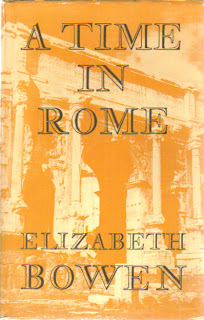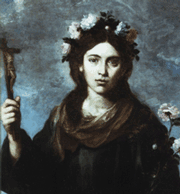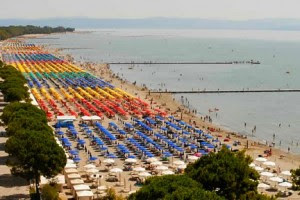I'll be honest, I'd never heard of this book when I picked it up. I was in the local library, thinking about the Italy in Books reading challenge, looking for something different, when this book jumped out. I read it without any preconceptions or expectations. Was my impulsiveness rewarded or betrayed? Here's my review of A Time in Rome, by Elizabeth Bowen...
It's not a guide book, nor is it a love story, though in some ways you could say it's both. It's mainly a travelogue, written in 1960, following the authors ruminations over her four months stay in Rome. It's written in an interesting style, which is unfortunately rather dated. The book also has an unusual (for the present day) sentence structure, which can sometimes grate. This is my main gripe with the book, its grammatical style. For whatever reason (perhaps my own grammatical idiosyncrasies), I found it hard to read, not for the content, but for the strange, convoluted sentence structure. Another complaint comes from the over-embellishment and almost aloof superiority with which it appears to be written. Having said all that, once I'd trudged through the first 70 pages or so, either the style improved or I had adapted to it, as I found myself warming to the author and enjoying the book more.
There's no doubt that the author is well versed in the classics. The sections on ancient Rome, covering the foro romano and the palatino were fantastic, and would be a great accompaniment to a walking tour, as the author really brings the ruins to life. Indeed, I got the impression that, were she alive today, she would make a fascinating guide to the eternal city, and, one suspects, pretty much everything else as well. I've learned quite a bit of history from the book, not just of Roman times, but also of the changes to the city afterwards. I never felt like I was learning though, more as if I was listening to a knowledgeable friend. Rather refreshingly, I got the impression that the author wasn't in love with the city, but merely amused by it. This made for a more objective view. There weren't any charming lotharios or romantic swooning views, merely descriptions of feelings and moments. A Time in Rome is a personal portrait of the city. Occasionally it can be rambling, but overall, it transported me to the author's world and gave me a few enjoyable hours, which is all one can ask for in a book.
Overall then, despite my initial reservations, I liked A Time in Rome. The combination of seeing Rome in the 1950s, from a very different perspective, made for an interesting read. Would I recommend it? I would have to say probably not. However, if you find yourself with some time in Rome, I can think of worse books to indulge.
A Time in Rome by Elizabeth Bowen is published by Random House and is available on Amazon and in all good bookshops.
I read this book as my August entry for the Italy in Books reading challenge. The August reviews from the other participants can be found here.






